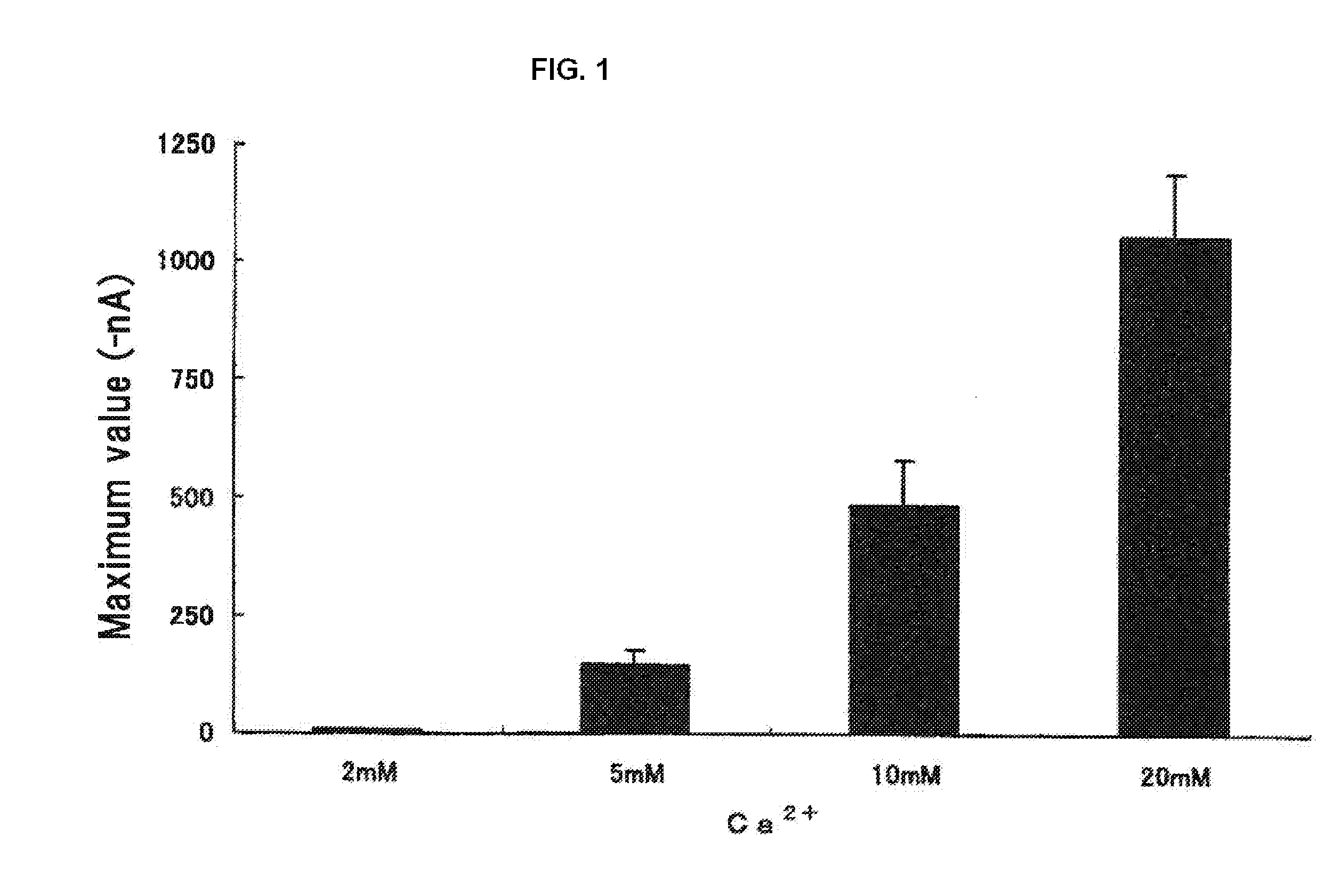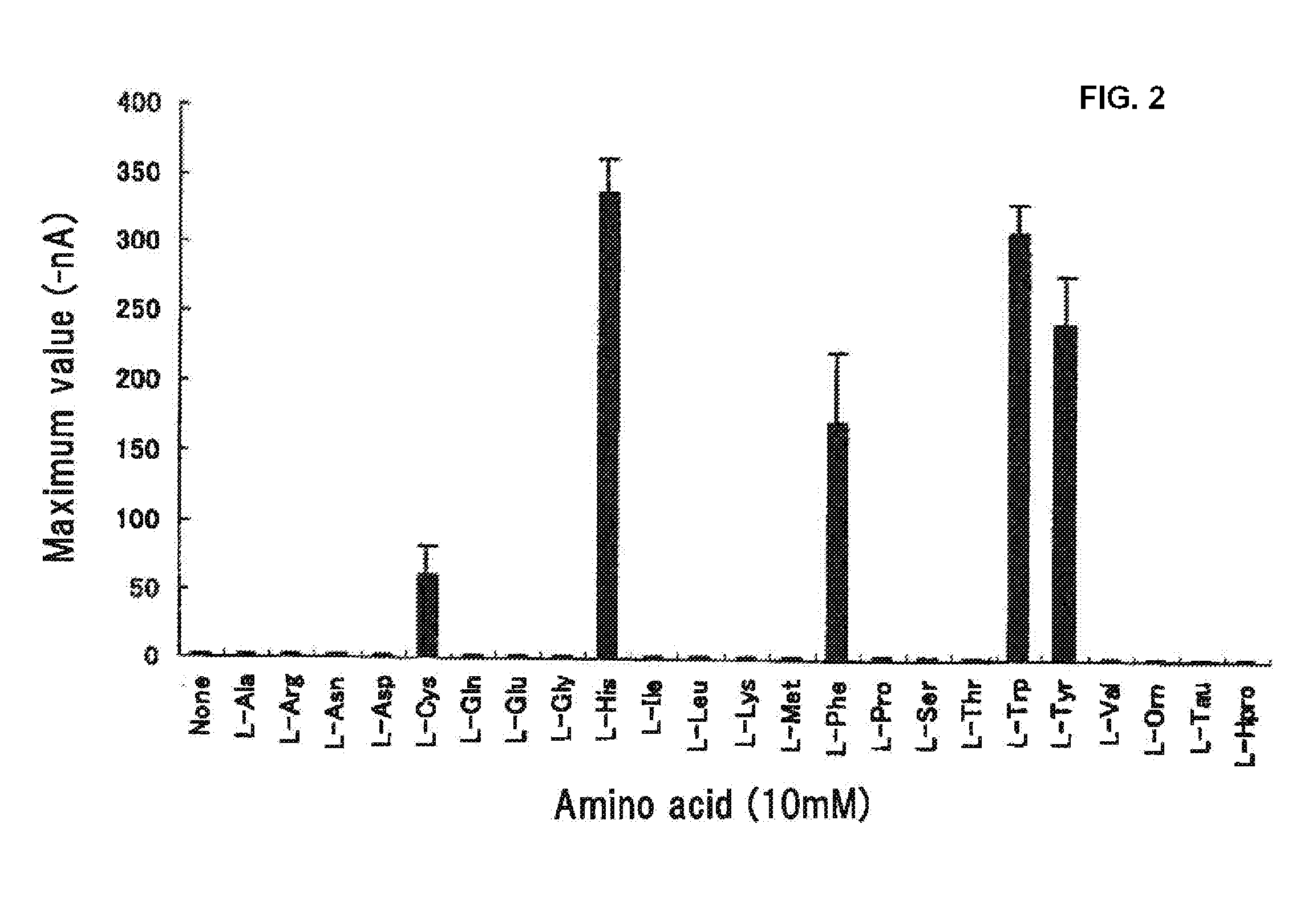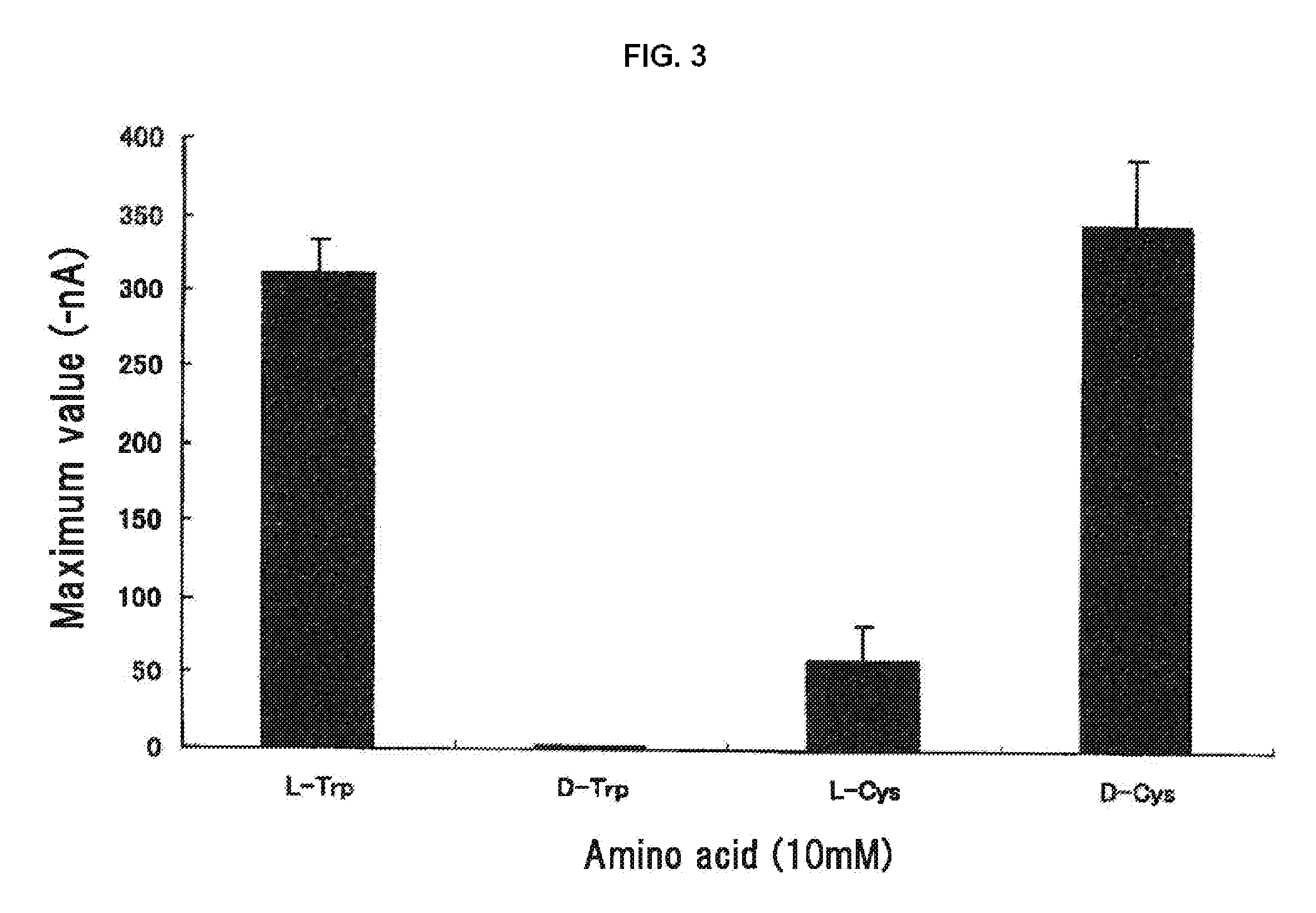Sweetener
a technology of sweetener and composition, applied in the field of sweetener composition, can solve the problems of suppressing the natural flavors of food, affecting the taste of food, and consuming a lot of food,
- Summary
- Abstract
- Description
- Claims
- Application Information
AI Technical Summary
Benefits of technology
Problems solved by technology
Method used
Image
Examples
reference example 1
Preparation of a Calcium Receptor Gene (cRNA)
[0107]The gene encoding the calcium receptor was prepared as follows. On the basis of the DNA sequence registered at NCBI (calcium receptor: NM—000388), synthetic oligo DNAs (forward primer (SEQ ID NO: 1) and reverse primer (SEQ ID NO: 2)) were synthesized.
[0108]PCR was performed by using the primers and Pfu ultra DNA Polymerase (manufactured by Stratagene) under the following conditions by using human kidney cDNA (manufactured by Clontech) as a source. After a reaction at 94° C. for 3 minutes, a cycle of reactions at 94° C. for 30 seconds, 55° C. for 30 seconds and 72° C. for 2 minutes was repeated 35 times, and then a reaction was performed at 72° C. for 7 minutes. Whether amplification was attained by PCR was confirmed by performing agarose electrophoresis of DNA, staining the DNA with a DNA staining reagent, and subsequent ultraviolet irradiation. The chain lengths of the PCR products were confirmed by comparison with DNA markers of k...
reference example 2
Preparation of Various Samples
[0109]As L-amino acid samples, 23 kinds of special grade amino acids including alanine, arginine, asparagine, aspartic acid, cysteine, glutamine, glutamic acid, glycine, histidine, isoleucine, leucine, lysine, methionine, phenylalanine, proline, serine, threonine, tryptophan, tyrosine, valine, ornithine and taurine (all from Ajinomoto Co., Inc.), and hydroxyproline (Nacarai Tesque, Inc.), were used. For D-Cys and D-Trp (Nacarai Tesque, Inc.) and calcium chloride, a special grade was used.
[0110]Furthermore, as peptide sample, γ-Glu-Cys-Gly (Sigma Aldrich Japan K.K.), γ-Glu-Cys(SNO)-Gly (Dojindo Laboratories), γ-Glu-Ala (Bachem Feinchemikalien AG), γ-Glu-Gly (Bachem Feinchemikalien AG), γ-Glu-Cys (Sigma Aldrich Japan K.K.), γ-Glu-Met (Bachem Feinchemikalien AG), γ-Glu-Abu-Gly (Abu: α-aminobutyric acid, Bachem Feinchemikalien AG), γ-Glu-Thr (Kokusan Chemical Co., Ltd.), γ-Glu-Val (Kokusan Chemical Co., Ltd.), γ-Glu-Leu (custom synthesis product), γ-Glu-Ile...
reference example 3
Synthesis of γ-Glu-Val-Gly
[0112]Boc-Val-OH (8.69 g, 40.0 mmol) and Gly-OBzl.HCl (8.07 g, 40.0 mmol) were dissolved in methylene chloride (100 ml), and the solution was kept at 0° C. Triethylamine (6.13 ml, 44.0 mmol), HOBt (1-hydroxybenzotriazole, 6.74 g, 44.0 mmol) and WSC.HCl (1-ethyl-3-(3-dimethylaminopropyl)carbodiimide hydrochloride, 8.44 g, 44.0 mmol) were added to the solution, and the mixture was stirred overnight at room temperature. The reaction solution was concentrated under reduced pressure, and the residue was dissolved in ethyl acetate (200 ml). The solution was washed with water (50 ml), 5% of citric acid aqueous solution (50 ml× twice), saturated brine (50 ml), 5% of sodium hydrogen carbonate aqueous solution (50 ml× twice), and saturated brine (50 ml) again. The organic layer was dried over anhydrous magnesium sulfate, magnesium sulfate was removed by filtration, and the filtrate was concentrated under reduced pressure. The residue was recrystallized from ethyl ace...
PUM
 Login to View More
Login to View More Abstract
Description
Claims
Application Information
 Login to View More
Login to View More - R&D
- Intellectual Property
- Life Sciences
- Materials
- Tech Scout
- Unparalleled Data Quality
- Higher Quality Content
- 60% Fewer Hallucinations
Browse by: Latest US Patents, China's latest patents, Technical Efficacy Thesaurus, Application Domain, Technology Topic, Popular Technical Reports.
© 2025 PatSnap. All rights reserved.Legal|Privacy policy|Modern Slavery Act Transparency Statement|Sitemap|About US| Contact US: help@patsnap.com



